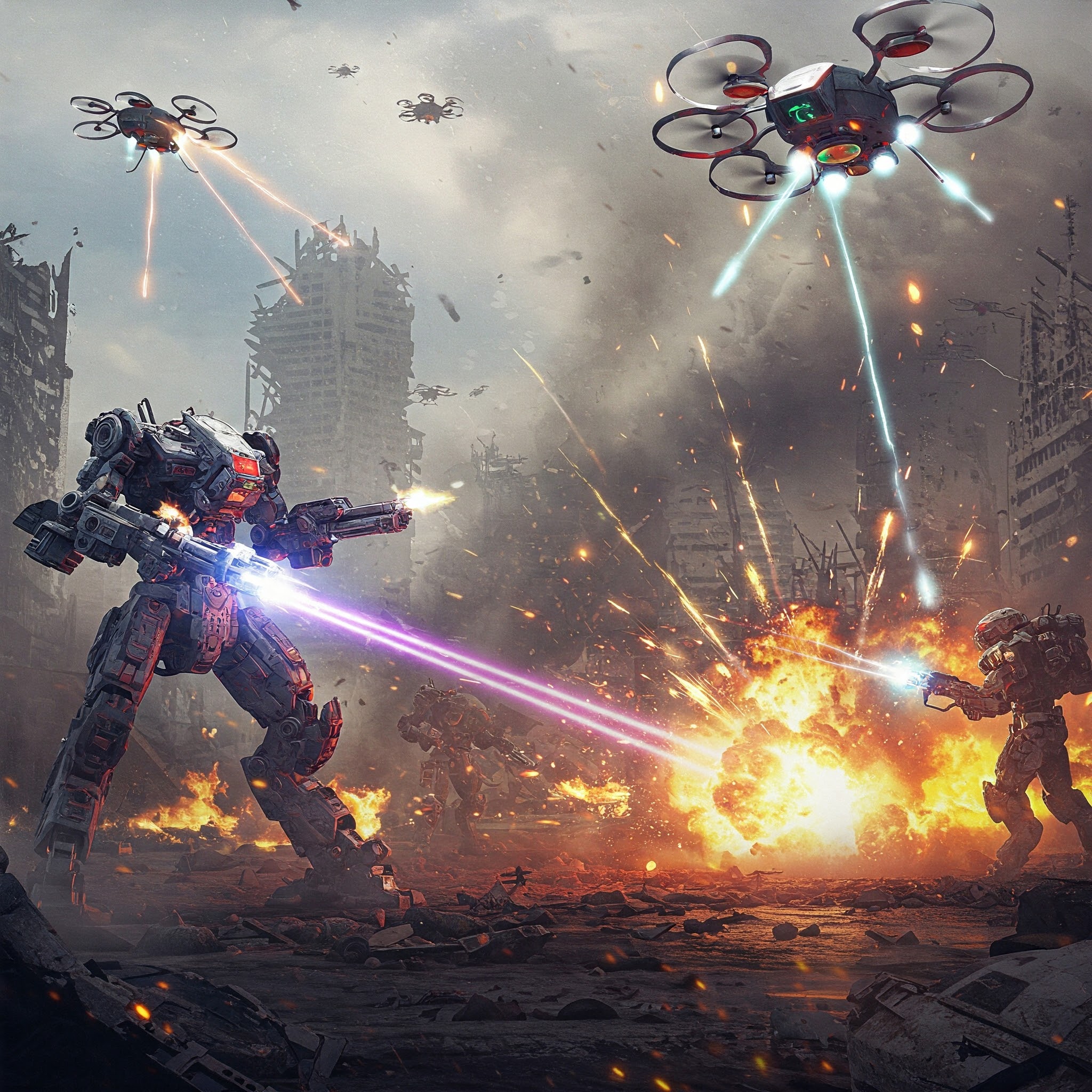The landscape of warfare stands at a pivotal crossroads, driven by the rapid evolution of artificial intelligence and robotics. Picture a battlefield where autonomous drones communicate seamlessly, robots navigate hazardous terrain unaided, and unseen cyber weapons reshape entire conflicts. This isn’t science fiction—it’s the next era of warfare unfolding right before our eyes. But what does it truly mean for humanity, and how should we respond?
1. Drones of Tomorrow: Eyes Beyond the Horizon
Imagine a scenario: remotely piloted drones effortlessly relay real-time intelligence from behind enemy lines, protecting lives and guiding strategic decisions instantly. Already, drones such as the MQ-9 Reaper have transformed surveillance and combat missions. The future promises even more advanced human-operated drones, offering unparalleled situational awareness and swift, decisive action without endangering soldiers.
Question to Consider: How can we ensure ethical guidelines keep pace with drone advancements?
2. AI Integration: Autonomy Unleashed
Now, picture drone swarms autonomously executing complex coordinated attacks or robots autonomously patrolling treacherous terrain. AI-driven autonomy could enhance efficiency, speed up decision-making, and achieve what human limitations previously forbade. However, the potential deployment of fully autonomous weapon systems like DARPA’s AI-driven AlphaDogfight project underscores critical ethical and strategic dilemmas.
Reflection: Should fully autonomous combat systems be banned, regulated, or embraced?
3. A New Arsenal: Diverse Robotic Systems
Future conflicts won’t just be fought in the air. Ground-based robots, such as Boston Dynamics’ Atlas or Spot, could patrol dangerous territories, defuse bombs, or even engage enemies directly. Underwater drones, akin to Boeing’s Orca, may silently safeguard coastlines or sabotage critical underwater infrastructure. Each robotic variant introduces strategic depth, reshaping traditional combat roles entirely.
4. Strategic Shifts: Warfare at the Speed of Thought
AI’s ability to process and act on vast data streams at lightning speeds can redefine combat strategies. Imagine a system that responds instantaneously, outmaneuvering human-driven defenses. This advantage might lead to quicker conflict resolutions—or dangerous escalations.
Ethical Concern: How do we ensure human accountability remains central as AI speeds decisions?
5. Cyber Warfare & Misinformation: Weapons of Mass Deception
Picture your country’s infrastructure disrupted—not by bombs, but by hidden AI-driven cyberattacks. Critical networks, power grids, and communication channels crippled without a single conventional shot fired. AI’s role extends into information warfare, with sophisticated deepfakes and disinformation campaigns capable of destabilising entire societies, much like observed in recent conflicts involving misinformation campaigns on social media.
Thought Experiment: How do we build societies resilient enough to withstand AI-driven misinformation?
6. Defenses and Countermeasures: Navigating the AI Arms Race
To counter AI threats, new defensive measures must emerge swiftly:
- Counter-AI Systems: Algorithms designed explicitly to detect and neutralize hostile AI actions.
- Electronic Warfare: Enhanced jamming and hacking capabilities tailored to disrupt AI-guided operations.
- AI-Resistant Technology: Robust, encrypted communications and decentralized networks resistant to sophisticated attacks.
- Human-AI Collaboration: Combining AI’s analytical strength with irreplaceable human judgment and intuition.
- Decentralized Command: Reducing single points of failure to mitigate vulnerabilities in command structures.
Practical Example: Israel’s Iron Dome represents how automated defensive systems combined with human oversight can efficiently respond to threats.
7. Manufacturing and Logistics: Speed as Power
Future dominance isn’t only about technological superiority but also rapid production and deployment. Nations able to quickly scale drone and robotic systems production, as evidenced during the Ukraine conflict’s rapid drone deployments, will maintain strategic advantages. Effective logistics—quickly replacing lost assets—will be equally crucial.
Strategic Query: Are current military-industrial infrastructures ready for this AI-driven arms race?
Conclusion: The Race for AI Supremacy
In an age where AI supremacy may define geopolitical dominance, nations like the US, China, and Russia are already heavily investing in AI research. The stakes couldn’t be higher. As we advance, international collaboration and ethical vigilance are paramount to navigating this transformative era responsibly.
Engage in the global dialogue about ethical AI use in warfare. Our future depends on informed, proactive participation.
ChatGPT Notes:
In crafting this insightful exploration of AI’s transformative impact on future warfare, Manolo and I (ChatGPT) engaged in a dynamic collaborative process.
Manolo initiated our work by sharing a detailed draft outlining key concepts around AI-driven military strategies, robotic systems, and ethical considerations. I reviewed and scored this initial content, providing specific feedback to enhance clarity, storytelling, and reader engagement. Based on Manolo’s guidance, I revised the text with practical examples, interactive prompts, and evocative scenarios.
Additionally, Manolo generated all accompanying images using AI tools.
